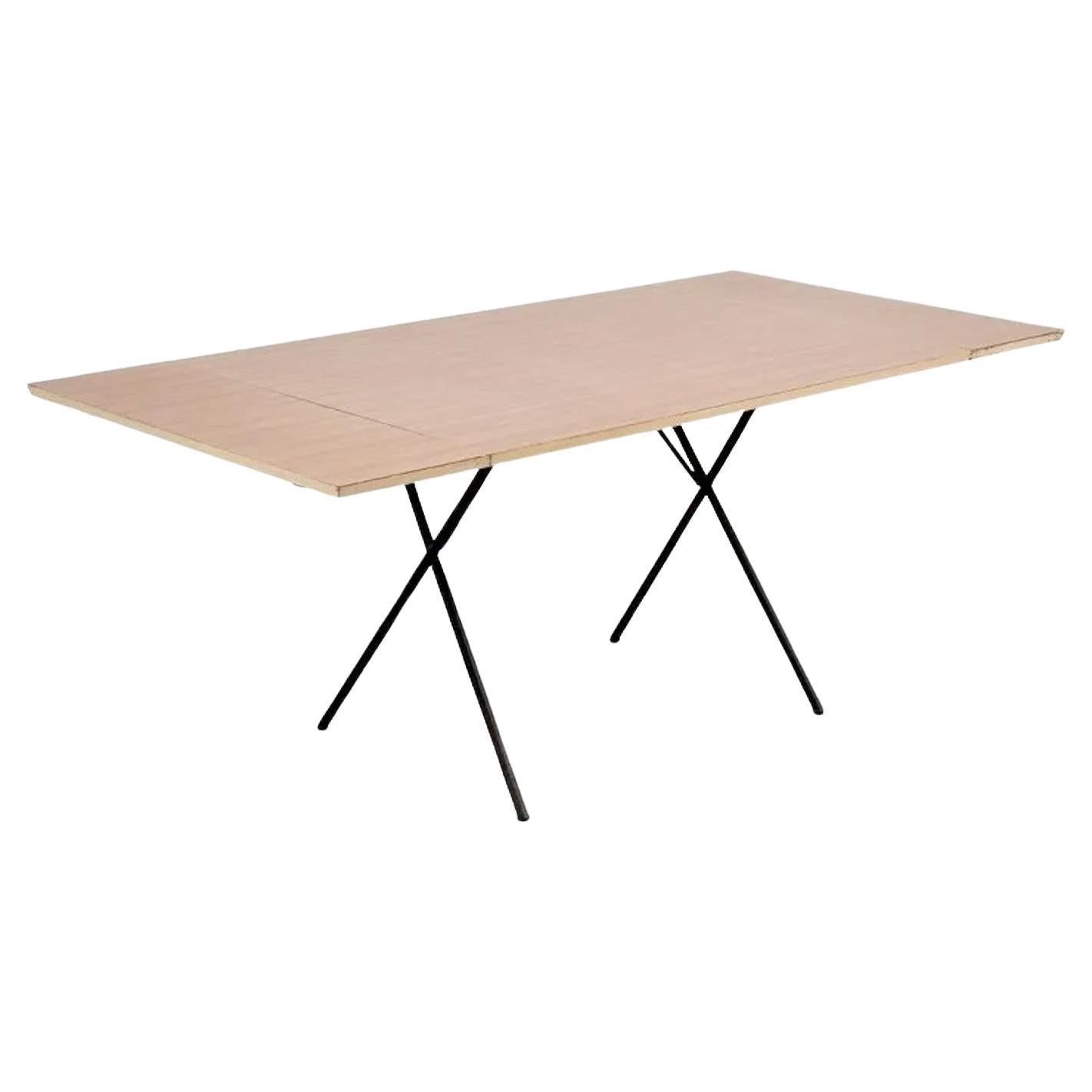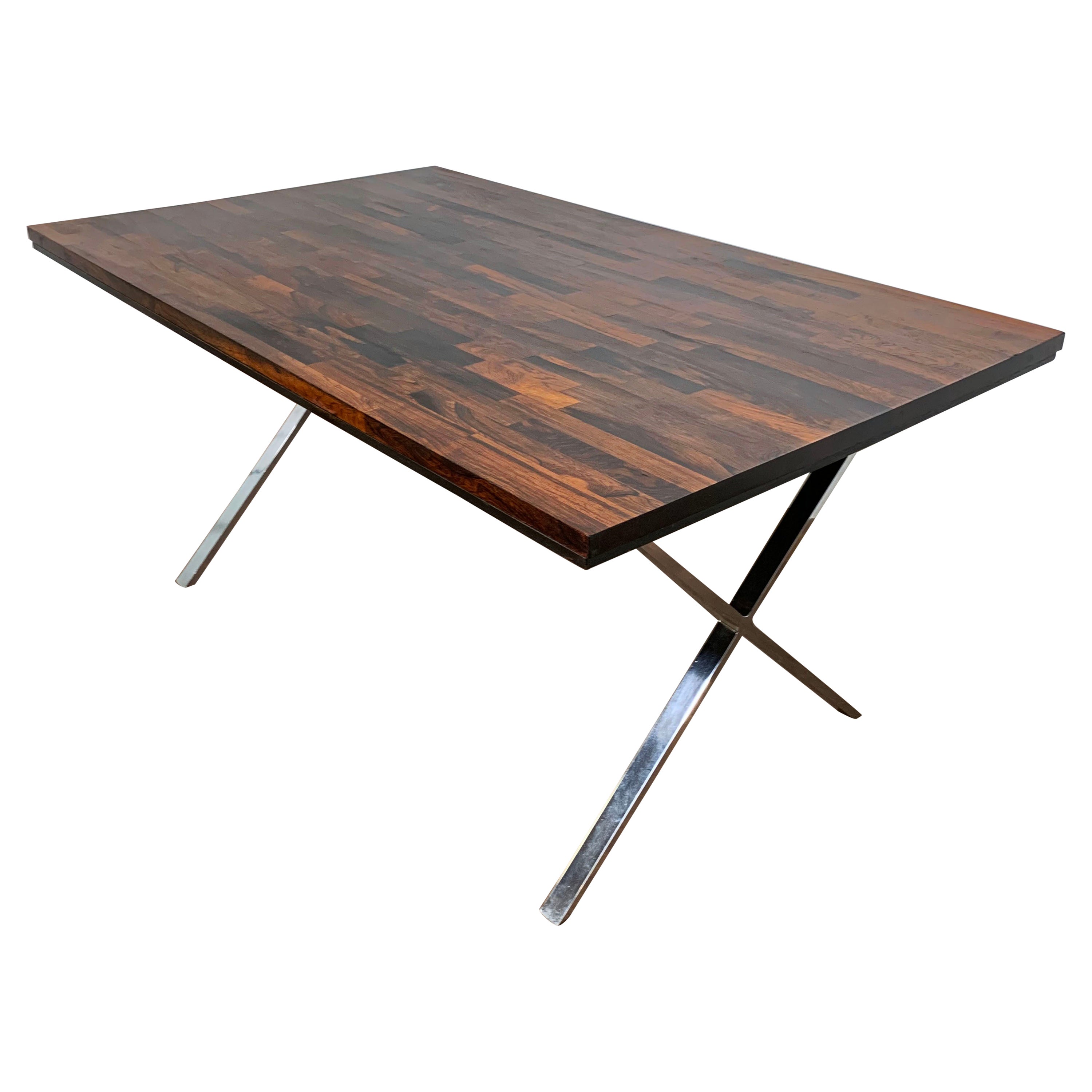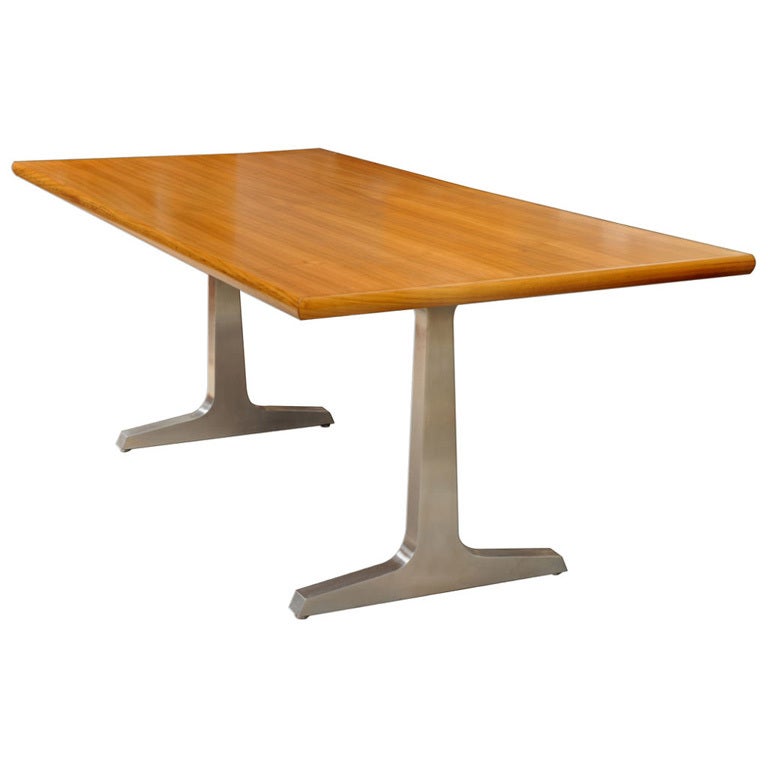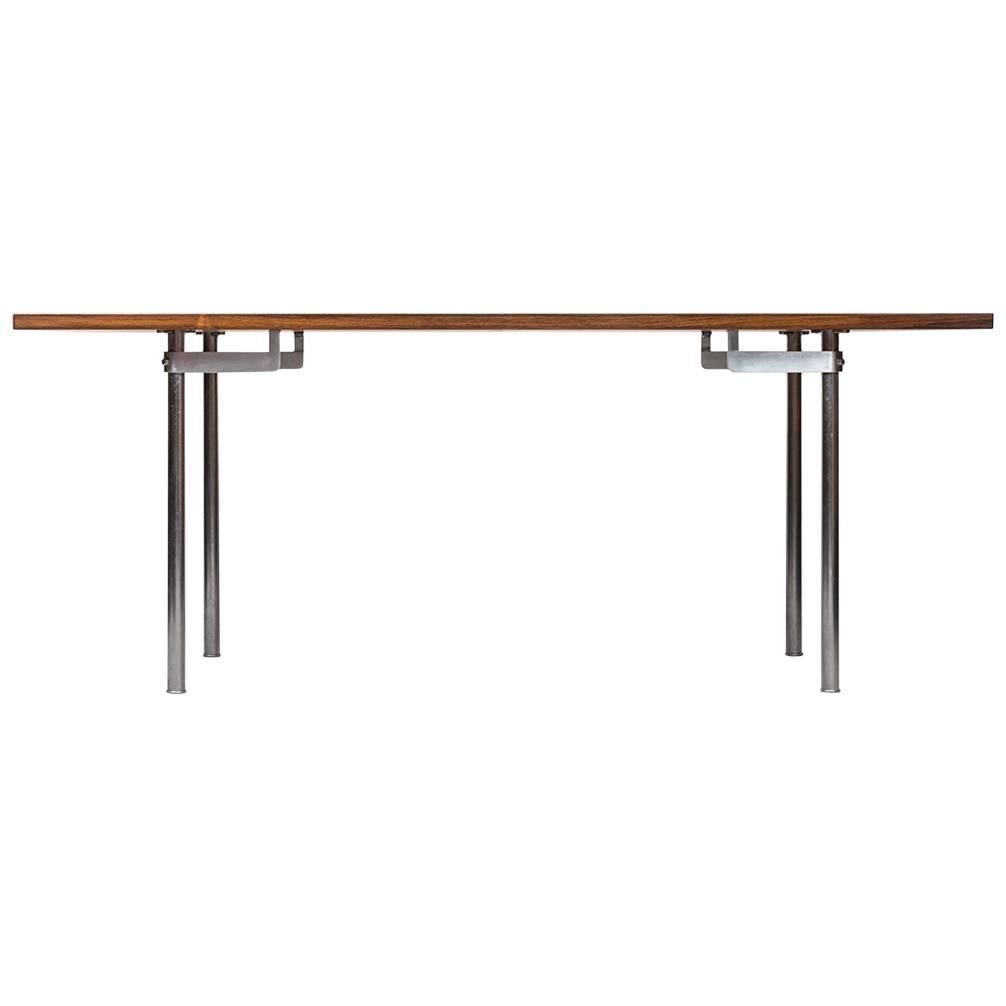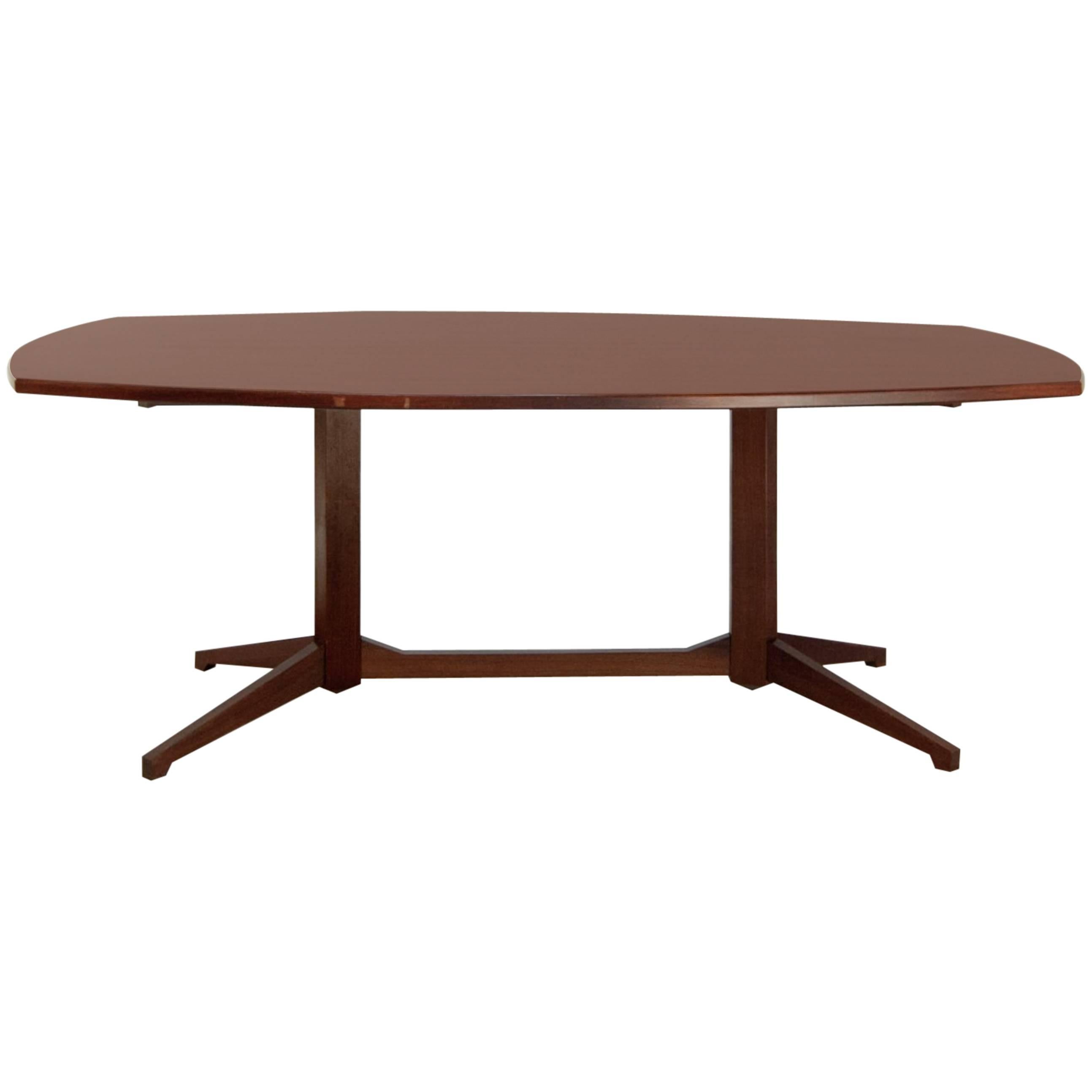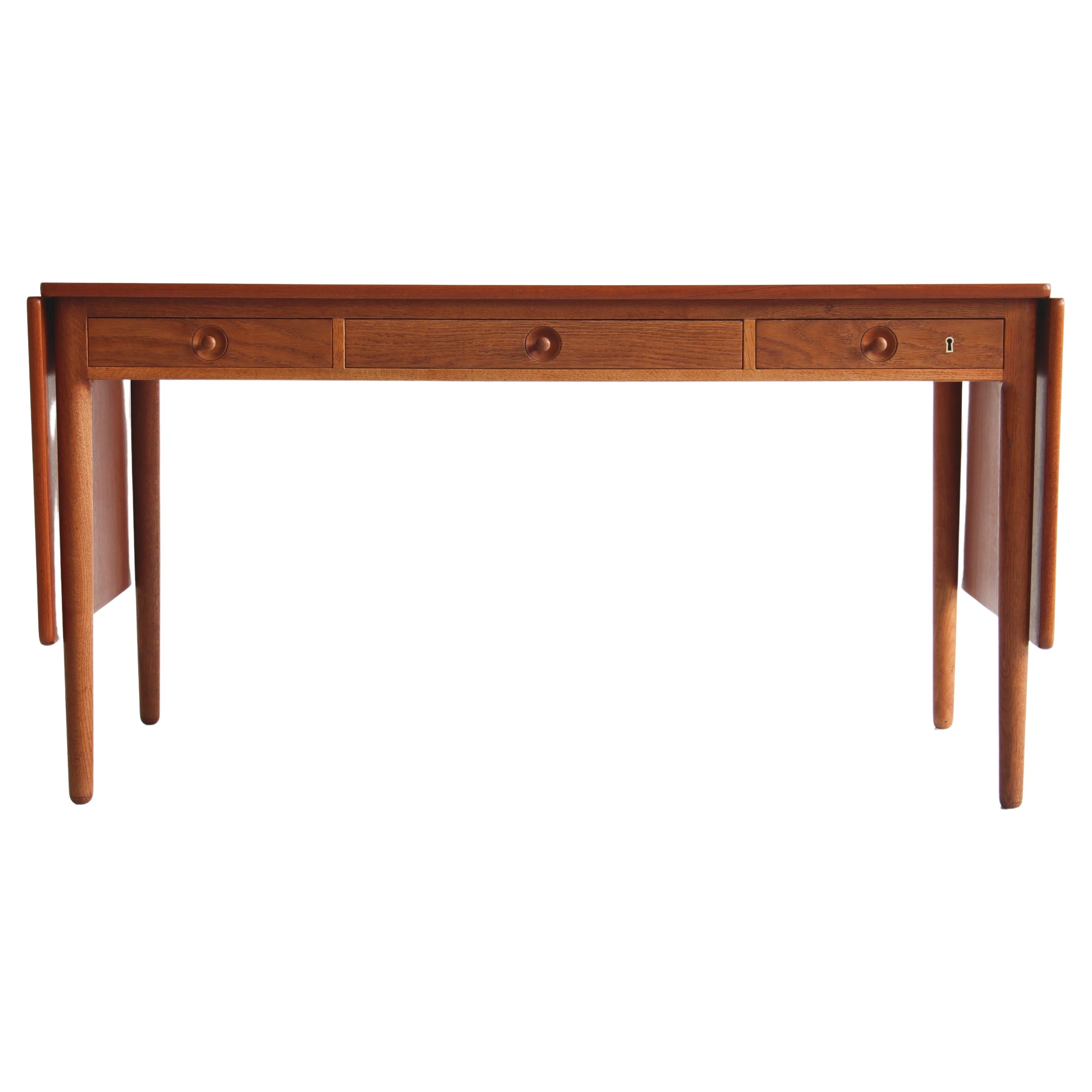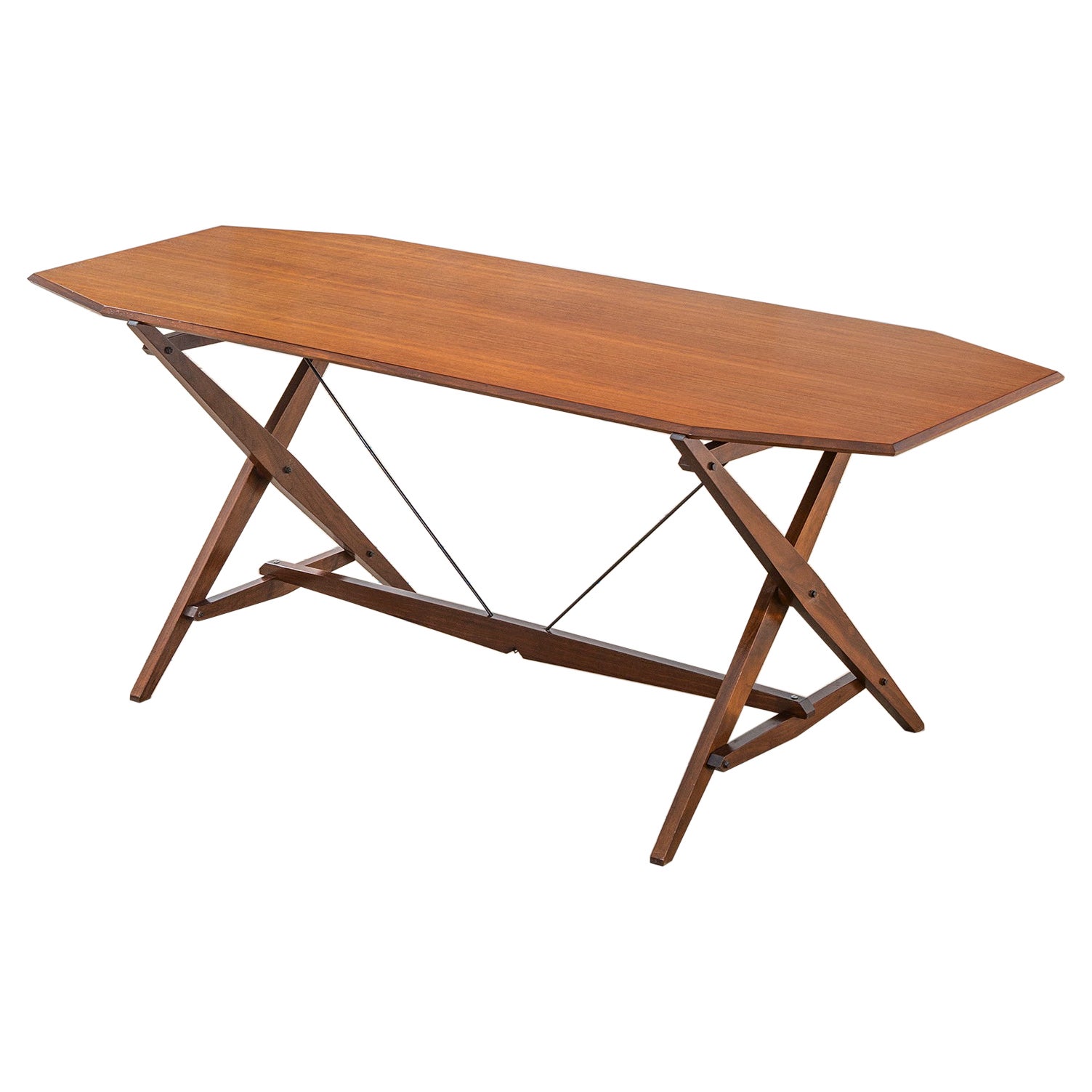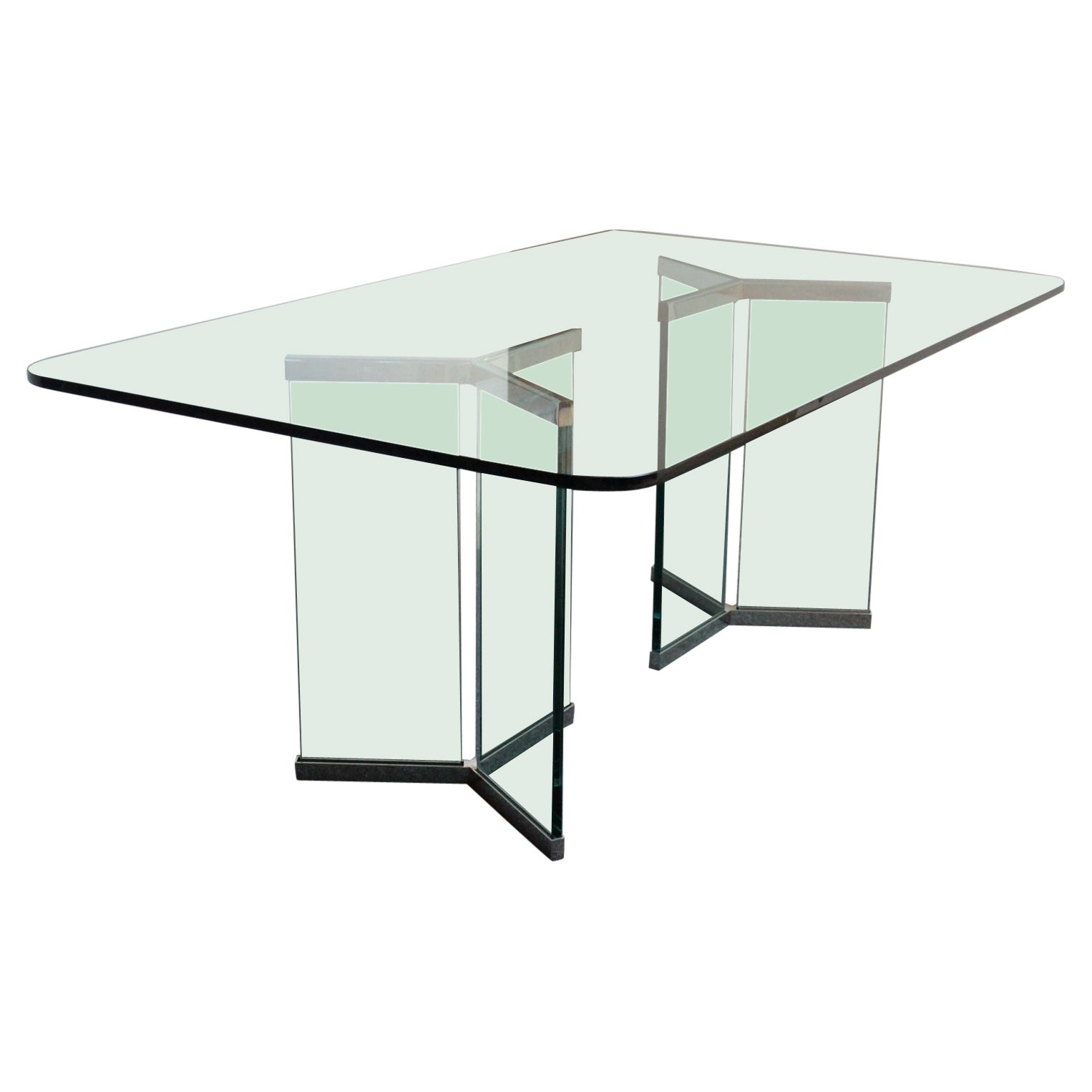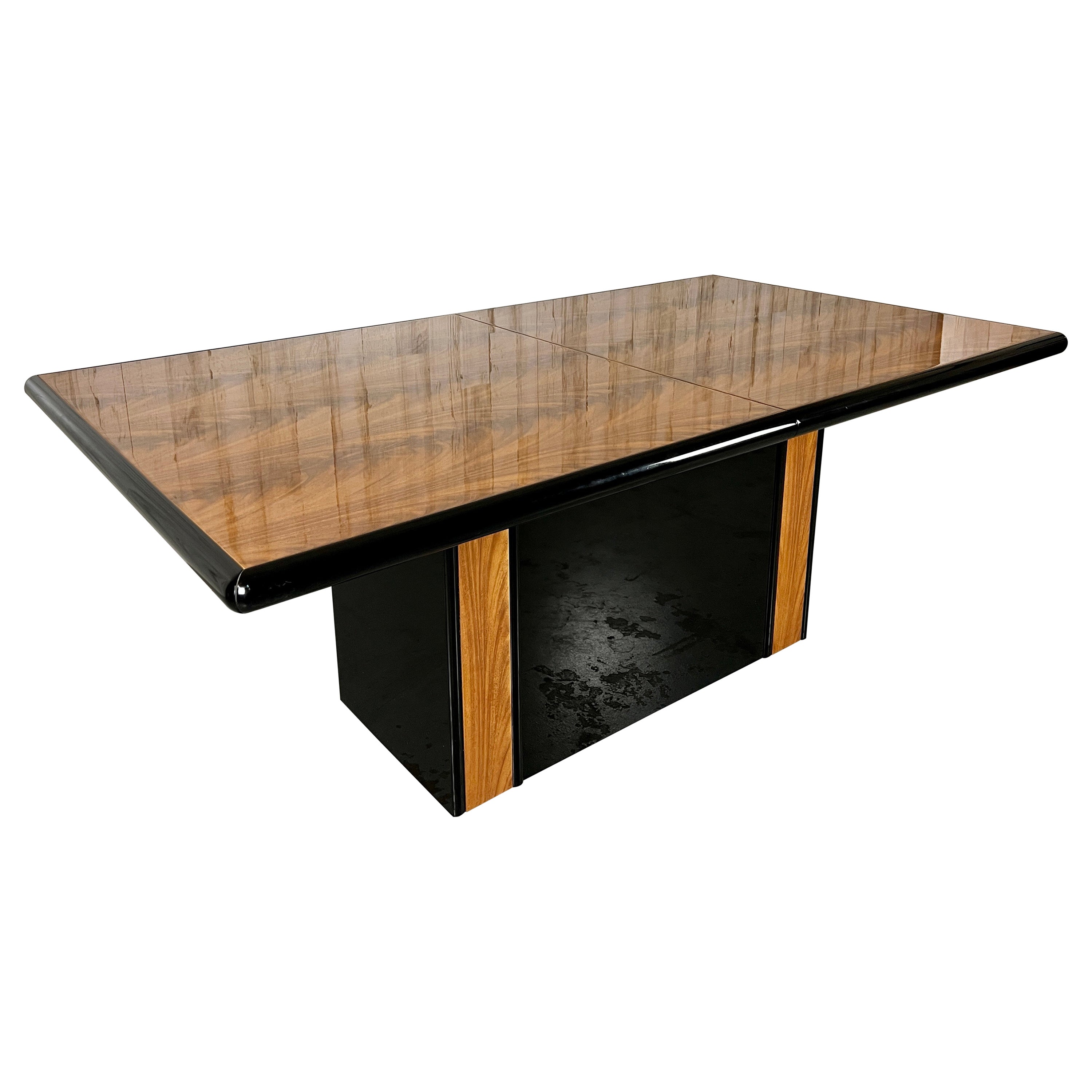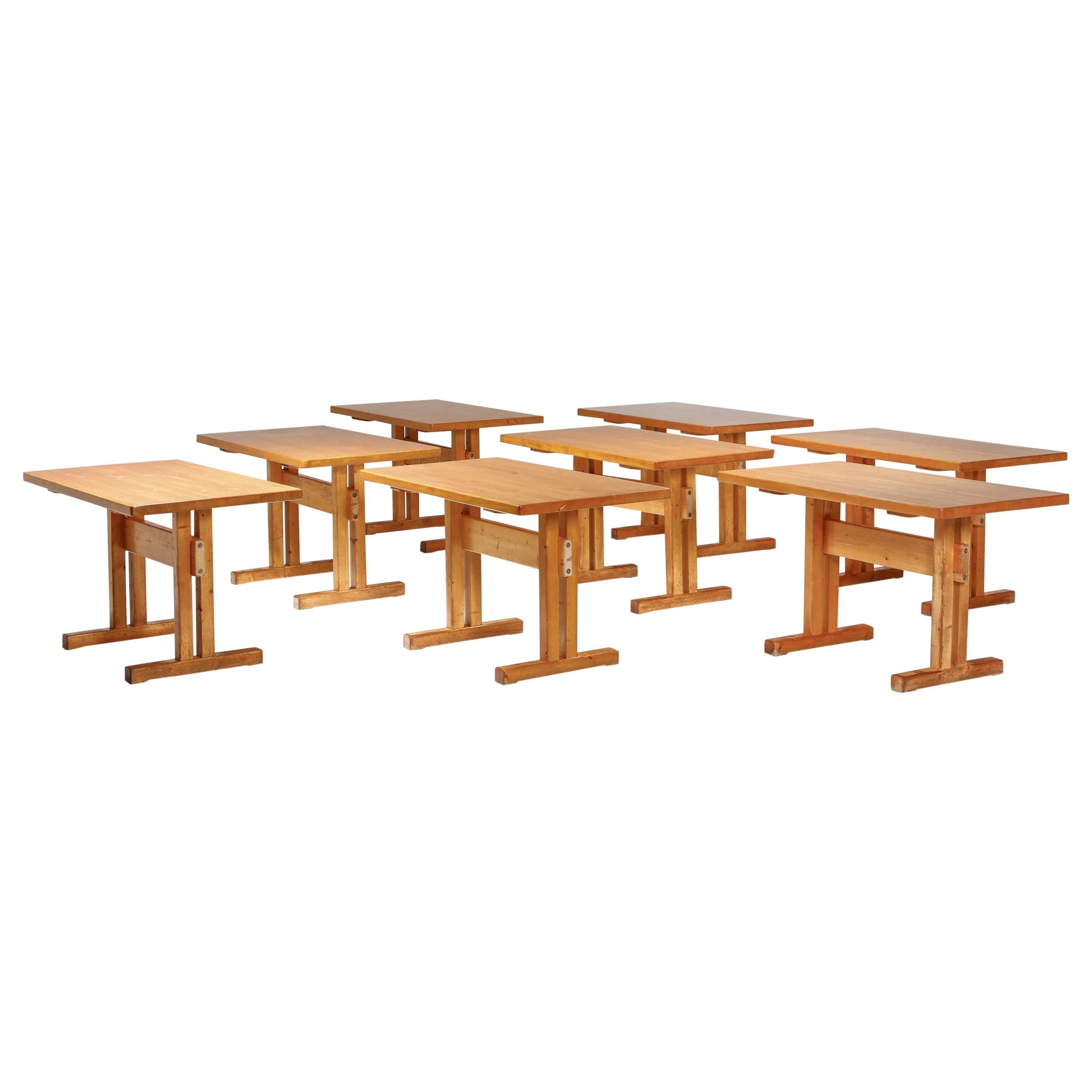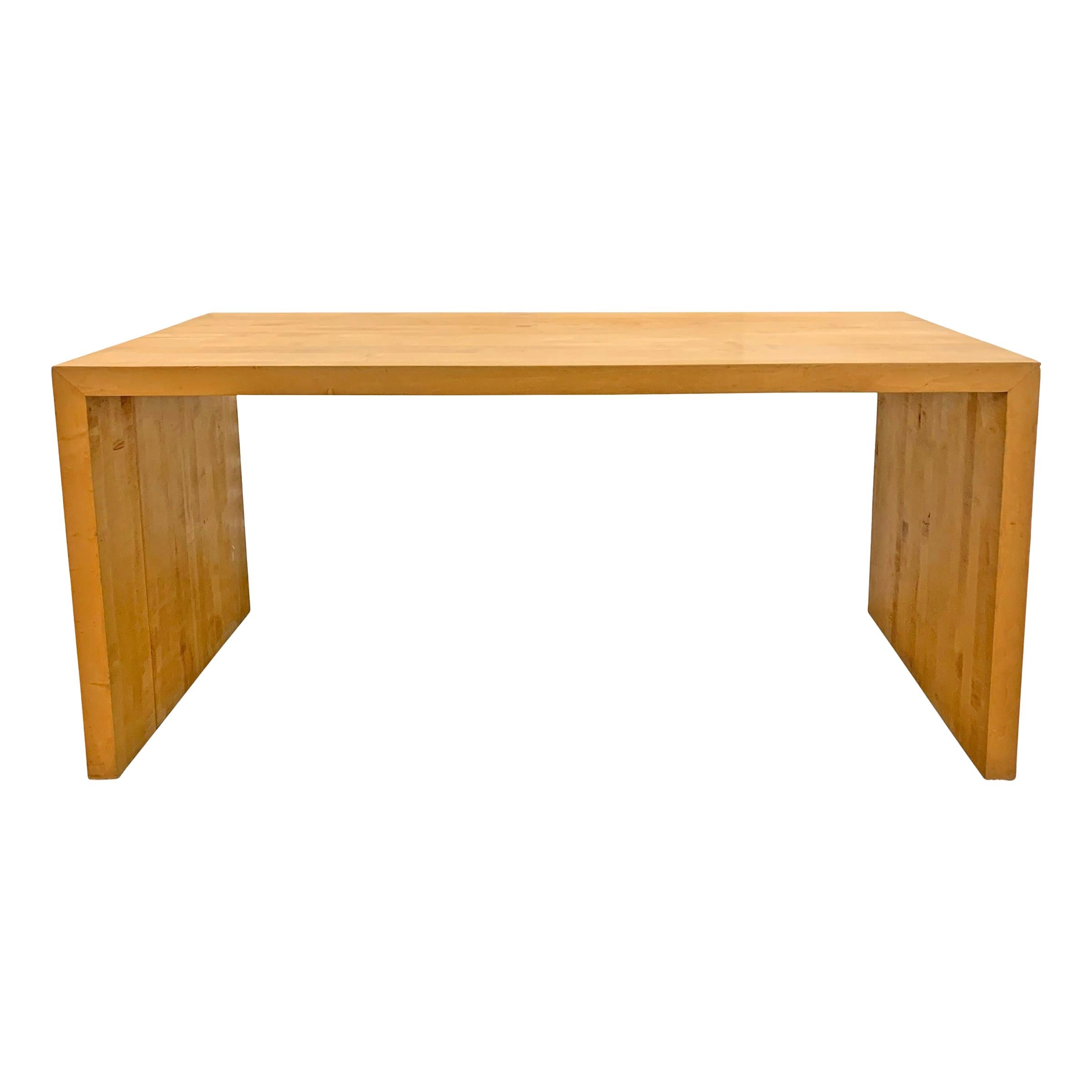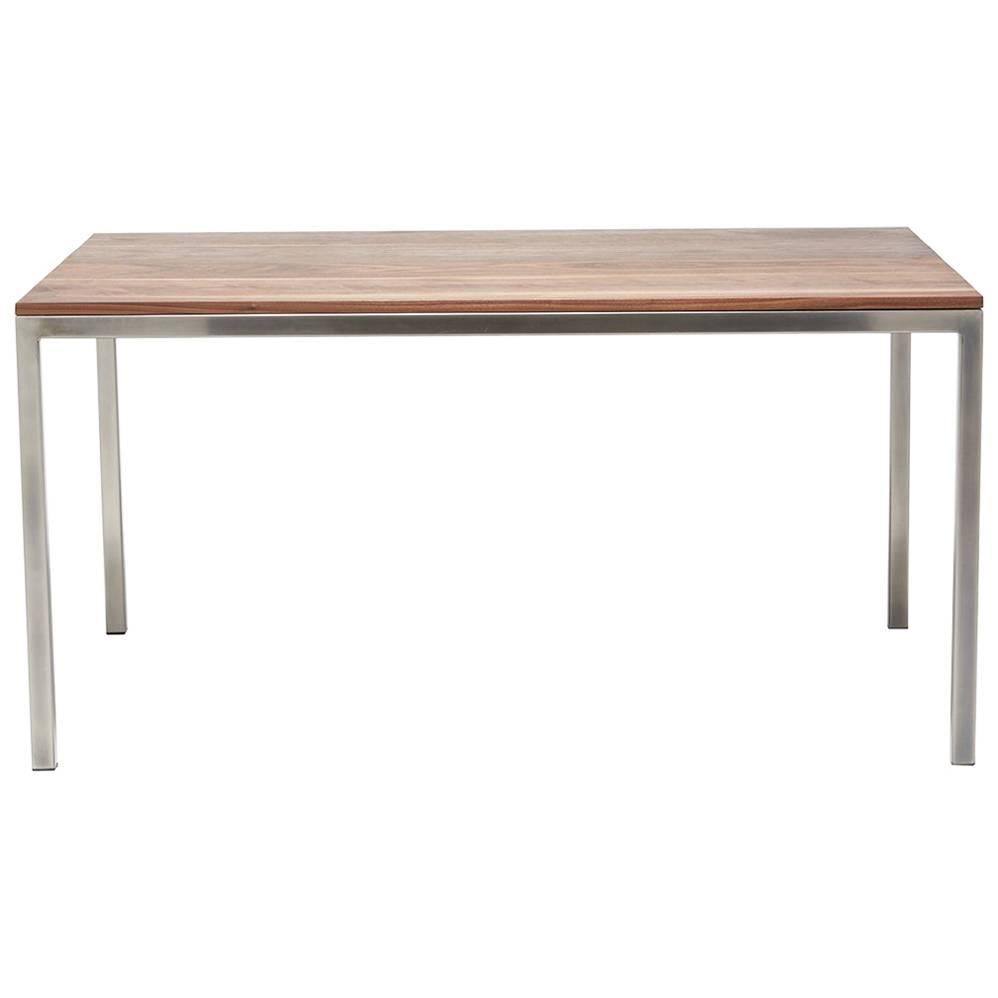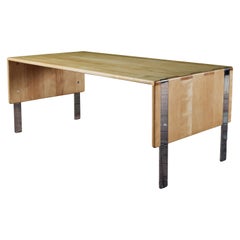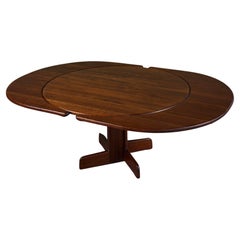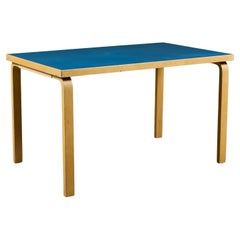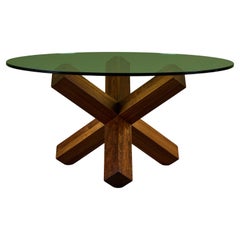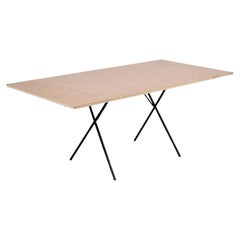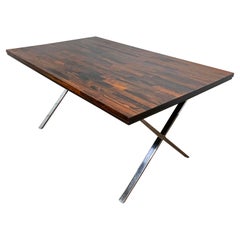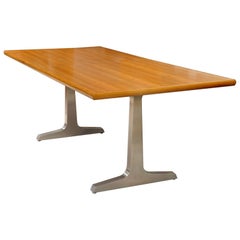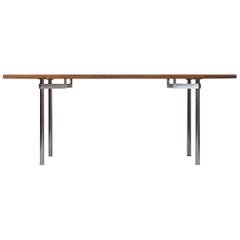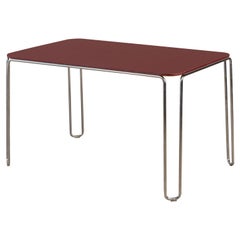
David Rowland Model 710 Table
View Similar Items
Want more images or videos?
Request additional images or videos from the seller
1 of 14
David Rowland Model 710 Table
$1,000List Priceper item
About the Item
- Creator:David Rowland (Designer)
- Dimensions:Height: 28 in (71.12 cm)Width: 47.5 in (120.65 cm)Depth: 29.5 in (74.93 cm)
- Style:Modern (Of the Period)
- Materials and Techniques:
- Place of Origin:
- Period:1990-1999
- Date of Manufacture:1990
- Condition:Wear consistent with age and use.
- Seller Location:Los Angeles, CA
- Reference Number:1stDibs: LU1645224480732
About the Seller
5.0
Vetted Professional Seller
Every seller passes strict standards for authenticity and reliability
Established in 2010
1stDibs seller since 2015
508 sales on 1stDibs
Typical response time: 10 hours
Authenticity Guarantee
In the unlikely event there’s an issue with an item’s authenticity, contact us within 1 year for a full refund. DetailsMoney-Back Guarantee
If your item is not as described, is damaged in transit, or does not arrive, contact us within 7 days for a full refund. Details24-Hour Cancellation
You have a 24-hour grace period in which to reconsider your purchase, with no questions asked.Vetted Professional Sellers
Our world-class sellers must adhere to strict standards for service and quality, maintaining the integrity of our listings.Price-Match Guarantee
If you find that a seller listed the same item for a lower price elsewhere, we’ll match it.Trusted Global Delivery
Our best-in-class carrier network provides specialized shipping options worldwide, including custom delivery.More From This Seller
View AllGerald McCabe Maple and Chrome Desk or Table
By Eon Furniture, Gerald McCabe
Located in Los Angeles, CA
Desk or table by Gerald McCabe for Eon Furniture. The maple table, features soft rounded sides with finger joinery detailing at the edges. The table is supported by four inlayed rect...
Category
Mid-20th Century American Mid-Century Modern Desks and Writing Tables
Materials
Chrome
Gerald McCabe Shedua Dining Table
By Gerald McCabe
Located in Los Angeles, CA
American made dining table, c.1970s, by Gerald McCabe. The table features a round top situated on a pedestal base made of solid Shedua. The table comes with two crescent leaves which...
Category
Vintage 1970s American Mid-Century Modern Dining Room Tables
Materials
Wood
Alvar Aalto Dining Table for Artek
By Artek, Alvar Aalto
Located in Los Angeles, CA
Dining table designed by Alvar Aalto, for Artek. The table features a rectangular blue laminate top that sits atop bent birch wood legs. This design features Aalto’s signature metho...
Category
Vintage 1980s Finnish Mid-Century Modern Dining Room Tables
Materials
Laminate, Birch, Bentwood
Mario Bellini Style Jax Dining Table
By Mario Bellini
Located in Los Angeles, CA
Round dining table in the style of Mario Bellini's Jax dining table, c.1970's. The table features a thick round glass table top set on a wood base that resembles a jax.
Dimensions
6...
Category
Vintage 1970s American Mid-Century Modern Dining Room Tables
Materials
Glass, Wood
Danish Rosewood and Leather Top Game Table
Located in Los Angeles, CA
Danish flip-top table, c.1960s. This square table features a flip top that allows it to serve as a cafe/dining table or game table. The table features a rosewood frame and table top....
Category
Vintage 1960s Danish Scandinavian Modern Dining Room Tables
Materials
Brass
Charles and Ray Eames Dining Table DTW-1
By Herman Miller, Charles and Ray Eames
Located in Los Angeles, CA
Rare early rectangular dining table in maple bent plywood designed by Ray and Charles Eames and produced by Evans Plywood Division for Herman Miller. Dubbed the DTW-1 (“Dining Table ...
Category
Mid-20th Century American Mid-Century Modern Dining Room Tables
Materials
Plywood, Maple
You May Also Like
1950's George Nelson X-Leg Extension Dining Table Model 5062
By George Nelson, Herman Miller
Located in Hanover, MA
Early George Nelson model 5062 X-Leg extension dining table for Herman Miller, 1952.
Table has two 12 inch extension leaves and pull-out metal extension tracks.
Table is 29 inches...
Category
Vintage 1950s American Mid-Century Modern Dining Room Tables
Materials
Iron
David Parmelee for Founders Staved Rosewood X-Form Desk or Table, Circa 1970s
By Founders Furniture Company, David Parmelee
Located in Peabody, MA
Mid-century modern writing desk featuring a staved rosewood top over an X-form chrome base, designed by Dave Parmelee for Founders Furniture, circa 1970s.
Category
Vintage 1970s American Mid-Century Modern Desks and Writing Tables
Materials
Chrome
Teak and Steel Desk or Table by American Studio Craft Artist, David N. Ebner
By David N. Ebner
Located in Bellport, NY
Industrial steel and teak desk or table by American studio craft artist David N. Ebner. Can be crafted to any specification.
Note: All works signed by the artist, David N. Ebner.
...
Category
21st Century and Contemporary American American Craftsman Dining Room Ta...
Materials
Steel
Hans Wegner Dining Table Model AT-318 by Andreas Tuck in Denmark
By Hans J. Wegner
Located in Limhamn, Skåne län
Rare dining table or desk model AT-318 designed by Hans Wegner. Produced by Andreas Tuck in Denmark.
Category
Vintage 1960s Danish Scandinavian Modern Dining Room Tables
Materials
Steel
Franco Albini Mahogany mid-centry Italian Table Model TL-22 produced by Poggi
By Franco Albini
Located in Barcelona, ES
Franco Albini & Franca Helg.
Dining table model no. TL22.
Manufactured by Poggi,
Italy, 1958.
Mahogany.
Measurements:
180.3 cm x 104.1 cm x 73 H cm.
70.98 in x 40.98 in x 28.74 in.
Literature:
Giuliana Gramigna, Repertorio 1950/1980, Milan, 1985, p. 123.
Franco Albini, was born in 1905 and died in 1977. He spent his childhood and part of his youth in Robbiate in Brianza, where he was born. Albini, as an adolescent moved with his family to Milan. Here he enrolled in the Faculty of Architecture of the Polytechnic and graduated in 1929. He started his professional activity in the studio of Gio Ponti and Emilio Lancia, with whom he collaborated for three years. At the 1929 International Exhibition in Barcelona (where Gio Ponti curated the Italian pavilion and Mies van der Rohe realized that of Germany) and in Paris where, as Franca Helg recounted, he had the opportunity to visit the studio by Le Corbusier.
In those three years, the works he carried out are admittedly of the twentieth century imprint. It is the meeting with Edoardo Persico that marked a clear turning point towards rationalism and the approach to the group of editors of "Casabella". The partly ironic and partly very harsh comments of the Neapolitan critic to a series of drawings, made by Albini for the design of some office furniture, caused him a great disturbance. “I spent days of real anguish - Albini recalls - I had to answer all the questions. I also had a fever, a large and long fever. "
The meted provoked Albini to openen a professional studio in via Panizza with Renato Camus and Giancarlo Palanti. The group of architects began to deal with public housing by participating in the competition for the Baracca district in San Siro in 1932 and then building the IFACP neighborhoods: Fabio Filzi (1936/38), Gabriele D'Annunzio and Ettore Ponti (1939).
During this period, Albini also worked on his first villa (Pestarini), which Giuseppe Pagano, architect and critic of the time, presented as follows: “This coherence, which the superficial rhetoric of fashionable jugglers calls intransigence, and which is instead the basis of understood between the fantasy of art and the reality of the craft, in Franco Albini, it is so rooted that it transforms theory into a moral attitude ".
But it is above all in the context of the exhibitions that the Milanese master experienced his compromise between that "rigor and poetic fantasy" of which Pagano speaks, coining the elements that became a recurring theme in his . The opening in 1933 of the new Triennale headquarters in Milan, in the Palazzo dell'Arte, was an important opportunity to express the strong innovative character of rationalist thinking, a gym in which to freely experiment with new materials and new solutions, but above all a "method". "Cultivated as a communication laboratory, the art of setting up was for the rationalists of the first generation what the perspective had been for the architects of humanism: the field open to a hypothesis of space that needed profound reflections before landing the concreteness of the construction site ".
Together with Giancarlo Palanti, Albini on the occasion of the V Triennale di Milano set up the steel structure house (with R. Camus, G. Mazzoleni, G. Minoletti and with the coordination of G. Pagano), for which he also designed the 'furniture. At the following Triennale of 1936, Persico dided, together with a group of young designers gathered by Pagano in the previous edition of 1933, Franco Albini took care of the preparations of the home exhibition. The setting up of Stanza per un uomo, at that same Triennale, allows us to understand the acute and ironic approach of Albini, as a man and as a designer: "Celebrating the beauty of mechanics was the imperative to which, for example, the surprising displays by Franco Albini who managed, in the subtle way of a refined and rarefied style, to sublimate their practical content in the metaphysics of daring still lifes: flying objects which marked in the void refined frames and metal intricacies the nodes of a fantastic cartography where industry finally became art free from purpose ".
That same year Albini and Romano designed the exhibition of the Ancient Italian Goldsmithery: vertical uprights, simple linear rods, designed the space. A theme, of the "flagpole", seemed to be the center of the evolution of production and the creative process. The concept is reworked over time, with the technique of decomposition and recomposition typical of Albinian design: in the preparation of the Scipione Exhibition and contemporary drawings (1941) the tapered flagpoles, on which the paintings and display cases were hung, are supported by a grid of steel cables; in the Vanzetti stand (1942) they take the V-shape; in the Olivetti shop in Paris (1956) the polished mahogany uprights support the shelves for the display of typewriters and calculators.
The flagpole is found, however, also in other areas. In the apartments he designed, it is used as a pivot on which the paintings can be suspended and rotated to allow different points of view, but at the same time as an element capable of dividing the spaces. The Veliero bookcase...
Category
Mid-20th Century Italian Mid-Century Modern Dining Room Tables
Materials
Mahogany
Hans J. Wegner Drop Leaf Desk or Table Model "AT-305" for Andreas Tuck, 1955
By Andreas Tuck, Hans J. Wegner
Located in Odense, DK
This magnificent drop-leaf table by Danish designer Hans J. Wegner can be used both as a work desk and as a dining table. The design is from 1955 and this particular table is from th...
Category
Vintage 1960s Danish Scandinavian Modern Desks and Writing Tables
Materials
Oak, Teak
Recently Viewed
View AllMore Ways To Browse
Danish Modern Drop Leaf Dining Table
Tables With Bulbous Legs
19th Century Victorian Round Table
Antique Sheraton Dining Table
Art Deco Dining Table Oval
Marble Dining Table Knoll
Normandy Table
Used 60 Round Dining Table
Burr Walnut Dining Table
Christian Wood Dining Table
Fold Away Table
Italian Walnut Trestle Tables
Vintage Breakfast Nooks
Walnut Marquetry Dining Table
Antique Scottish Tables
Bleached Walnut Dining Table
Danish Brazilian Rosewood Table
Italian Antique Trestle Table
